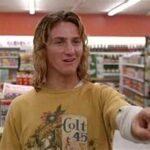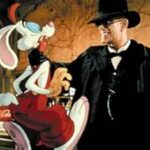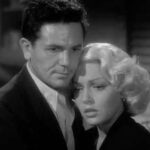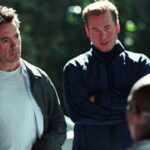The second in a series of five lists counting down the 50 greatest movies set in the City of the Angels.
Sure, it's mindless. Sure, it relies heavily on Keanu Reeves' ability to pass himself off as a cop. And sure, its premise is patently ridiculous. But it works. Not only because of Sandra Bullock's girl-next-door charm and Dennis Hopper's juicy turn as a mad bomber, but because it stays within the confines of its (admittedly implausible) conceit. While many action films ultimately go from the sublime to the ridiculous and rely the boys in the CG studio for an ending, this one manages to wrap things up without making us feel like our willing suspension of disbelief has been hijacked by over-the-top pyrotechnics and gunplay, computer-generated special effects and superhuman feats of strength, speed and durability.
After a heist which should have netted him $93,000, Lee Marvin is shot and left for dead by his partner. When he doesn't die, he comes back looking for two things: revenge and his money, both of them in equal measure. To that end, he not only systematically takes out, one by one, those who've double-crossed him, he says at least a dozen times in the film, "I want my money." The film looks and feels like noir 2.0, with the shadows and darkness of the brick-and-mortar L.A. of the Eisenhower era replaced by the bright glare and the cold, hard concrete and steel of its late-60's incarnation, and the muted passion and undercurrent of humanity of those earlier years supplanted by a cool, calm and eerily dispassionate single-mindedness.
This one will never be mistaken for high art or accused of putting on cinematic airs. It is what it is. And what it is, is a witty, charming and utterly heartfelt little romantic comedy starring, written and/or directed by some of the most beguiling and understated comedic minds of their day: Buck Henry, Elaine May, Warren Beatty and Charles Grodin. Plus, will someone please tell me, how is it when anyone talks about the most beautiful, talented and alluring leading ladies in the history of filmdom, Julie Christie's name rarely, if ever, gets mentioned?
 36. Fast Times at Ridgemont High (1982)
36. Fast Times at Ridgemont High (1982)
Talk about a movie whose cultural influence dwarfs its artistic achievement. Cameron Crowe wrote it. Amy Heckerling directed it. And an entire generation of American kids saw themselves in it -- and not just as caricatures, but as real flesh-and-blood adults-in-training: the jocks, the geeks, the burger-flippers, the retail clerks, the mall rats, and, for the first time ever, the stoners. Sean Penn's pot-smoking, pizza-eating, daydreaming surf bum, Jeff Spicoli, didn't just breathe life into an otherwise vague and ill-defined L.A. archetype, he unleashed it upon the world, complete with its very own accent, its own sleepy eyed sense of style, and more than anything else, its very own vocabulary. Gnarly dude.
 35. Who Framed Roger Rabbit? (1988)
35. Who Framed Roger Rabbit? (1988)
Granted, the final product could have been better. The story could have been more engaging, the lead toon more likable, and the spirit and tone more in keeping with those slyly irreverent animated shorts it paid homage to. But those are quibbles. Given the era it which it was made, Roger Rabbit remains a remarkable artistic and technical achievement. Because long before computer animation made it possible for companies like Pixar and DreamWorks to produce one film after another, year after year, the producers of this full-length feature did it the old fashioned way -- one cel at a time.
 34. The Postman Always Rings Twice (1946)
34. The Postman Always Rings Twice (1946)
Like Double Indemnity, it's based on a James M. Cain ripped-from-the-headlines novel, both of them inspired by the true story of a Queens housewife who, with her illicit lover, conspired to kill her much older husband. Unlike Double Indemnity, however, Postman was not written and directed by the inimitable Billy Wilder. And therein lies the difference. While Double Indemnity, with its smart, genre-defining dialogue, first-person voice over and flashback narrative technique, might have been compelling even with two marginal actors in the lead, Postman relies almost exclusively on the incredible performances of -- and kinetic sexual chemistry between -- its two star-crossed lead actors, John Garfield and Lana Turner.
Long before it was considered little more than the first installment of a dead-tired, dog-eared and bone-dry Hollywood franchise, it was one of the best buddy movies since Butch and Sundance. Full of action, snappy dialogue and just enough backstory to make us care, the film was the equivalent of an amusement park roller coaster ride. And at some point you simply swallowed hard, held on tight, and prayed like hell that the car didn't jump the track. It didn't, and when it was all over you found yourself thinking, "Wow, that was fun. Can we do it again?" Which, unfortunately, was apparently exactly what the producers thought too; and not once, or even twice, but three more times.
 32. Kiss Kiss Bang Bang (2005)
32. Kiss Kiss Bang Bang (2005)
Call it neo-noir; a contemporary take on those classic post-war themes of isolation, betrayal and despair, all played on in a sleek, modern, shiny clean and surgically enhanced L.A. But whereas noir always took itself so damn seriously, Kiss Kiss Bang Bang couldn't be bothered. It would much rather have some fun, kill off a few characters, throw in a red herring or two, and make a little money for its effort. And the delight it takes in tweaking the age-old rules of crime fiction proves to be as much a breath of fresh air as the early 80's TV show Moonlighting was to anyone fed up with so many years of humorless, formulaic and mind-numbingly pious private dick shows like Mannix, Baretta and Ironside.
A case could be made that Cody Jarrett is not only one of the most memorable portrayals in Jimmy Cagney's storied career, he might just be one of the most indelible characters in the history of Hollywood. That anyone could watch White Heat and recall that Virginia Mayo and Edmund O'Brien were even onscreen is a tribute to those two actors. Because Cagney is an absolute force of nature from beginning to end; psychotic, impulsive, wildly erratic and mean as a snake. And while he's eternally devoted to his mother, his devotion carries with it all the warmth and tenderness of a lit stick of dynamite. The film's finale, shot atop an oil rig down in San Pedro, features Cagney screaming out one of the great exit lines ever committed to film.
 30. 2 Days in the Valley (1996)
30. 2 Days in the Valley (1996)
A connect-the-dots, cynical and black as hell comic-mystery, the film was a little too smart, cool and conspicuously hip for some. But I loved it. I really, really did. But rather than giving you my take, I've lifted the following from Roger Ebert's original review, which is letter perfect: The movie illustrates a world view shared by a lot of people in Los Angeles: If there are only six degrees of separation between any two people in the world, there are only two or maybe three separating everyone in the Valley from the rich and famous... A cop can become Joseph Wambaugh. A personal trainer can become Steven Seagal. A hooker can become Heidi Fleiss.

[...] 50 Greatest Movies Set in L.A. (Part 2 of 5) [...]
[...] 50 Greatest Movies Set in L.A. (Part 2 of 5) [...]
[...] 50 Greatest Movies Set in L.A. (Part 2 of 5) [...]